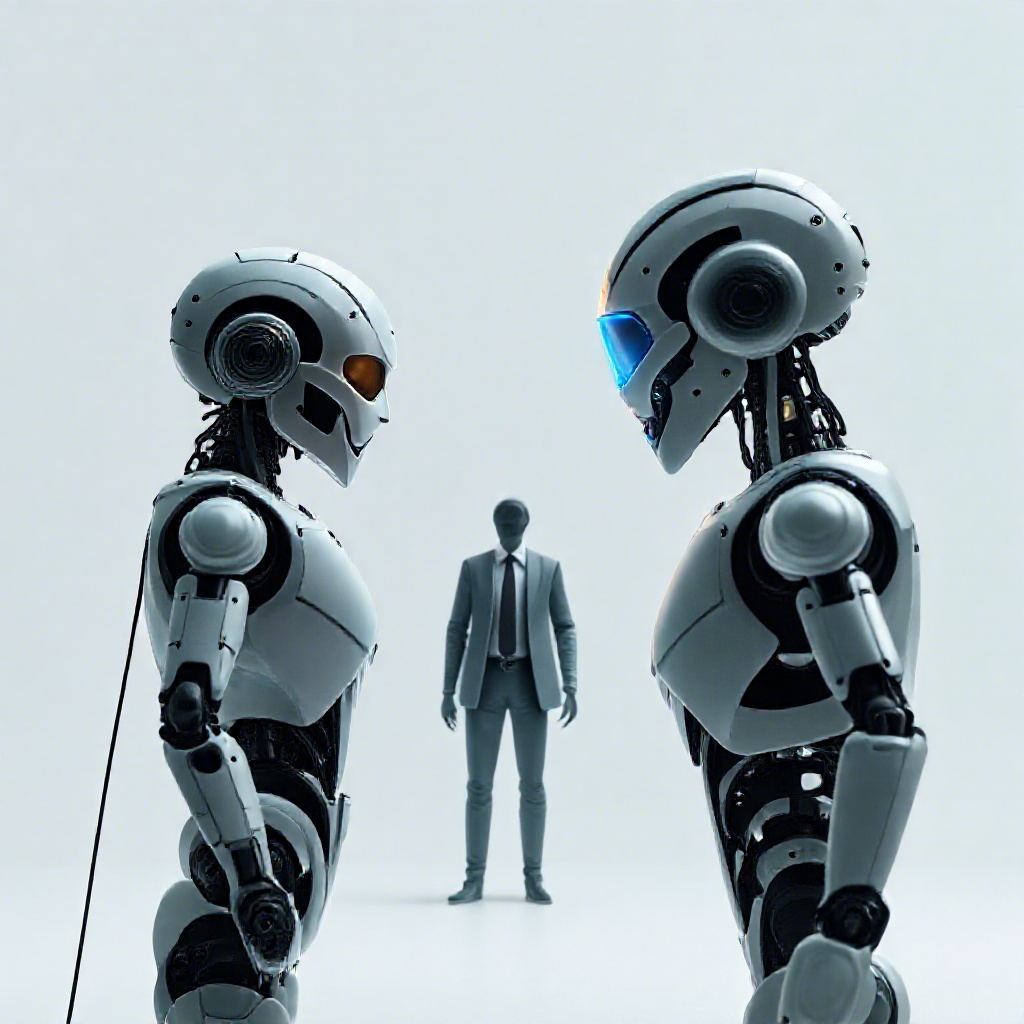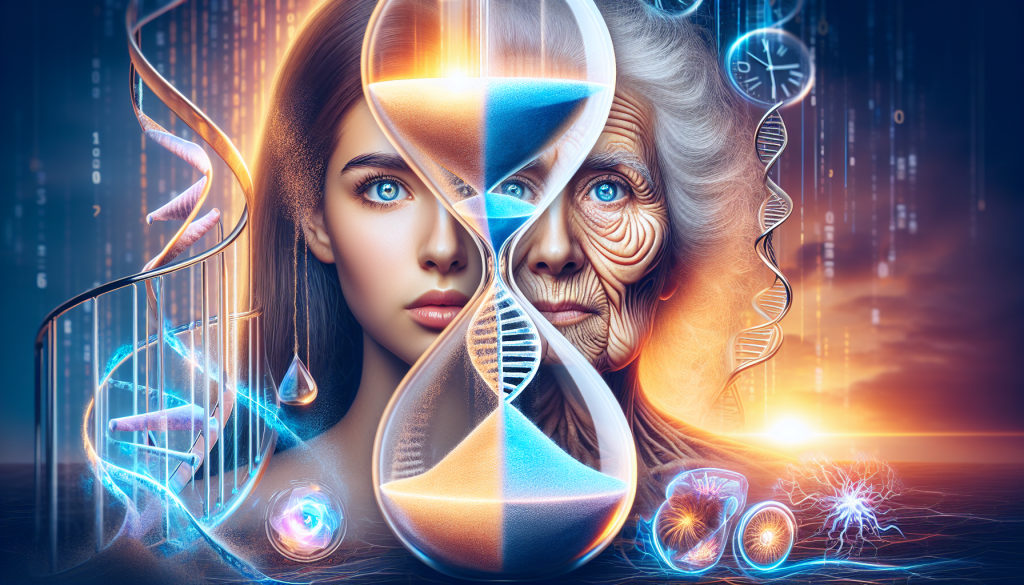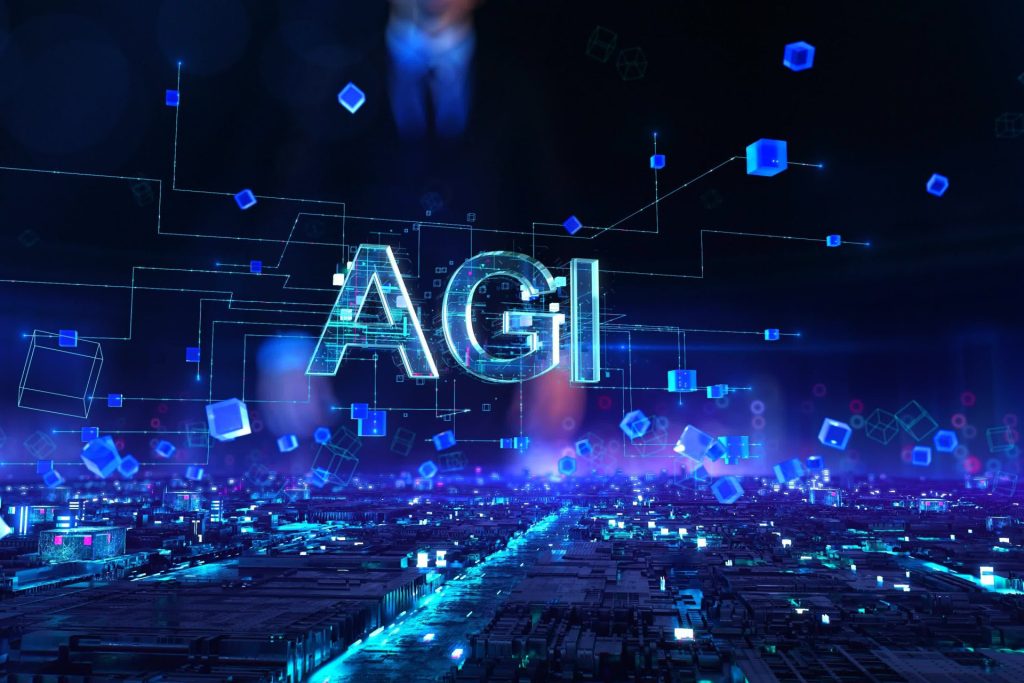Have you ever wondered how artificial intelligence is shaking things up in our classrooms? Well, I’ve been diving deep into this topic, and let me tell you, it’s pretty mind-blowing. Artificial intelligence in education is changing the game, transforming how we teach and learn in ways we never thought possible. From personalized learning experiences to smart tutoring systems, AI is opening up a whole new world of possibilities for students and teachers alike.
In this article, we’re going to explore the exciting ways AI is revolutionizing education. We’ll look at how it’s helping teachers design better curricula and manage their workload more efficiently. We’ll also dive into the benefits of artificial intelligence in education for students, like boosting critical thinking skills and tailoring learning to individual needs. But don’t worry, we won’t shy away from the challenges either. We’ll talk about things like academic integrity and the need for teacher professional development in this new AI-powered landscape. So, buckle up and get ready to geek out with me about the future of learning!
Understanding Artificial Intelligence in Education
It is mind-blowing how this technology is shaking things up in our classrooms. So, what exactly are we talking about when we say “AI in education”? Well, it’s all about using smart computer systems to make learning and teaching better 1.
Defining AI for Education
Think of AI in education as a super-smart helper that can do all sorts of cool things. It’s like having a personal tutor that never gets tired! AI can analyze how students are doing, create personalized lessons, and even help teachers with boring admin stuff 1. It’s not just about replacing teachers, though. AI is here to give them a hand, making their jobs easier and helping students learn in ways that work best for them.
One of the coolest things about AI in education is how it can adapt to each student’s needs. It’s like having a learning experience that’s tailor-made just for you 2. And get this – AI can even predict how well a student might do in the future. It’s like having a crystal ball for your grades!
Machine Learning vs Traditional EdTech
Now, let’s talk about the difference between machine learning and traditional educational technology. It’s kind of like comparing a smart robot to a really well-programmed calculator.
Traditional EdTech is like following a recipe. You put in the ingredients (data), follow the steps (program), and get your dish (output) 2. It’s great for straightforward tasks, but it can be a bit rigid.
Machine learning, on the other hand, is like having a chef who learns from experience. You give it a bunch of recipes (data), and it figures out how to make the best dish on its own 2. It’s super flexible and can handle complex problems that traditional programming might struggle with.
In education, this means machine learning can do some pretty awesome stuff:
- Predict how well a student might do
- Automatically grade assignments
- Create personalized learning paths
Key AI Technologies in Learning
Now, let’s look at some of the cool AI tech that’s making waves in education:
Personalized Learning Systems: These are like smart tutors that adapt to how each student learns best 3.
Smart Content Creation: AI can help make learning materials that are just right for each student 3.
Automated Grading: No more waiting ages for test results! AI can grade tests super fast 3.
Virtual Assistants: Imagine having a helper that can answer questions anytime, day or night 3.
Predictive Analytics: This is like having a crystal ball that can spot if a student might need extra help 1.
These technologies are changing the game in education. They’re making learning more fun, more personal, and more effective. It’s like having a whole team of super-smart helpers working to make sure every student gets the best education possible.
So, there you have it! That’s the lowdown on AI in education. It’s pretty exciting stuff, right? We’re just scratching the surface of what’s possible, and I can’t wait to see what comes next!
Transforming Teaching with AI
Hey there! Let’s chat about how AI is shaking things up in the classroom. It’s pretty wild how this tech is changing the game for us teachers. I’ve been exploring some cool AI tools, and I’m excited to share what I’ve discovered.
AI-Powered Instructional Tools
So, there’s this whole bunch of AI tools that are making our lives as teachers way easier. Take Eduaide.ai, for example. It’s like having a super-smart teaching assistant right at your fingertips 4. It helps with lesson planning, instructional design, and even generates educational content. How cool is that?
And get this – there’s another tool called Curipod that can whip up an interactive slide deck in seconds 4. It’s not just boring slides either. We’re talking polls, word clouds, and even brain breaks. It’s like having a mini-entertainment studio for your lessons!
But here’s the real kicker – AI is helping us create more personalized lessons. It’s like having a crystal ball that tells us exactly what each student needs. By analyzing tons of student data, these AI systems can spot where kids are struggling and suggest ways to help them out 5. It’s like having a superpower to see into each student’s mind!
Automated Grading and Feedback
Now, let’s talk about the part of teaching that used to make me want to pull my hair out – grading. AI is totally changing the game here. We’ve got these automated grading systems that can zip through exams faster than you can say “pop quiz” 6.
But it’s not just about speed. These AI graders are super consistent too. No more worrying about being too harsh on the last few papers because you’re tired and cranky 6. Plus, they can spot patterns in student responses, helping us figure out where the class might be struggling as a whole 7.
The best part? AI can generate detailed feedback for each student 7. It’s like having a personal tutor for every kid in the class. And let me tell you, the time this saves is incredible. More time for us to focus on actually teaching and connecting with our students!
Personalized Lesson Planning
Alright, here’s where things get really exciting. AI is helping us create lesson plans that are tailored to each student’s needs. Remember how much time we used to spend trying to differentiate our lessons? Well, AI tools can now adapt content and strategies to match each student’s learning style and pace 5.
It’s like having a super-smart assistant that knows exactly what each kid needs. These tools can even recommend specific resources or modifications to help students overcome challenges 5. It’s like having a roadmap for each student’s success!
And you know what’s really cool? Some of these AI tools can create materials that align perfectly with our learning objectives and curriculum goals 5. It’s like having a co-teacher who always knows exactly what we’re aiming for.
So there you have it! AI is transforming how we teach in some pretty amazing ways. It’s making our jobs easier, our lessons more engaging, and our students’ learning experiences more personalized. It’s not about replacing us teachers – it’s about giving us superpowers to be even better at what we do. How awesome is that?
Enhancing Student Learning Experiences
Hey there! Let’s dive into how AI is revolutionizing the way students learn. It’s pretty mind-blowing stuff, and I can’t wait to share it with you.
Adaptive Learning Platforms
You know how sometimes you’re in class, and you’re either bored because it’s too easy or lost because it’s too hard? Well, that’s where adaptive learning platforms come in to save the day. These AI-powered systems are like having a personal tutor that knows exactly what you need.
These platforms use smart algorithms to analyze how you’re doing and adjust the content to match your pace and style 8. It’s like having a learning experience tailor-made just for you! The best part? It keeps challenging you when you’re doing well and gives you extra support when you’re struggling. Talk about a win-win!
One cool example is SC Training (formerly EdApp). It’s got this nifty feature called “Create with AI” that can whip up lessons in no time 8. And get this – it even throws in games and quizzes to make learning fun. Who said learning can’t be a blast?
Intelligent Tutoring Systems
Now, let’s chat about Intelligent Tutoring Systems (ITSs). These are like the superheros of the AI education world. They’re not just about spitting out information; they’re designed to simulate one-on-one tutoring 9. Imagine having a tutor available 24/7, ready to help you whenever you need it. Pretty cool, right?
ITSs can do some pretty amazing things. They can figure out the best learning path for you, recommend content, and even engage you in conversations 9. It’s like having a really smart friend who’s always there to help you study.
But here’s the really exciting part – ITSs are showing great potential to change how we think about and treat Autism Spectrum Disorder 10. They’re helping kids with ASD develop social skills in a way that’s comfortable for them. It’s like giving these kids a superpower to navigate social interactions.
AI for Special Education Needs
Speaking of special education, AI is making some serious waves here too. It’s all about creating more inclusive classrooms where every student can thrive.
For kids with ASD, AI and social robots are becoming awesome tools. These kids often feel more comfortable with the predictable expressions of robots 10. It’s like having a friend who always understands you.
There are some really cool robots out there, like NAO and Milo. NAO is this 2-foot-tall robot that can have conversations with kids, while Milo helps teach kids to identify human emotions 10. It’s like having a fun, non-judgmental buddy to practice social skills with.
But it’s not just about robots. There are also tools like Read&Write that help with reading and writing skills 11. It’s like having a personal assistant to help you understand and express yourself better.
The best part? All these AI tools are helping kids reach developmental milestones earlier than they might on their own 10. It’s like giving them a boost to catch up with their peers.
Challenges and Considerations for AI Adoption
Hey there! Let’s chat about some of the hurdles we’re facing as we bring AI into our classrooms. It’s not all smooth sailing, but don’t worry – we’ve got this!
Teacher Training and Readiness
So, here’s the deal: we teachers need to up our game when it comes to AI. It’s like learning a new language, and we’ve got to be fluent to help our students. The thing is, many of us aren’t quite there yet. In fact, a study found that math teachers feel least confident about teaching data, statistics, and tech stuff compared to other subjects 12. And get this – computer science was the least popular credential for K-12 educators to pursue in the 2018-2019 school year 12. Yikes!
But here’s the good news: we can totally turn this around. We need some serious professional development to get us up to speed on AI. It’s not just about understanding the tech; it’s about figuring out how to use it in ways that complement our teaching 13. We’ve got to stay on our toes and keep learning about the latest AI tools and how to use them effectively in our classrooms.
Equity and Access Issues
Now, let’s talk about a big elephant in the room: not everyone has equal access to AI tools. It’s like we’re running a race, but some kids are starting miles behind others. First-generation, low-income, and minority students often enter higher education already at a digital disadvantage 14. And with AI tools becoming more expensive, it’s getting even tougher for some students to keep up 14.
Here’s a scary stat: access to a full suite of popular AI tools could cost about $1,275 per year 14. That’s a lot of money for students who are already struggling with student loans and living costs. We’ve got to find ways to level the playing field, or we risk widening the digital divide even further.
Balancing AI and Human Interaction
Alright, here’s where things get really interesting. We need to find the sweet spot between using AI and maintaining that human touch in education. AI is awesome for tasks like data analysis and admin stuff, but it can’t replace the empathy and moral guidance that we teachers provide 13.
Research shows that teacher-student relationships are super important for effective learning 13. AI can’t give a student a high-five or understand the look on their face when they’re struggling with a concept. We need to use AI to enhance our teaching, not replace it.
One cool way to do this is by using AI for the boring stuff, freeing us up to focus more on connecting with our students 13. It’s like having a super-efficient assistant so we can spend more time doing what we do best – inspiring and guiding our students.
Conclusion
As we’ve seen, AI is causing a revolution in education, bringing about exciting changes in how we teach and learn. From personalized learning experiences to intelligent tutoring systems, AI is opening up new possibilities to enhance education for students of all backgrounds and abilities. While challenges like equity issues and the need to balance technology with human interaction exist, the potential benefits of AI in education are immense. It’s an exciting time to be involved in education, with AI tools offering ways to make learning more engaging, effective, and tailored to individual needs.
As we move forward, it’s crucial to keep exploring and adapting to these new technologies in education. Teachers, students, and educational institutions all have a role to play in shaping how AI is used to improve learning outcomes. For those interested in diving deeper into the world of AI and its applications, check out my AI Startup School course and its application project Otonom Fund, a blockchain launchpad and accelerator for AI startups. By embracing these new tools and approaches, we can work towards creating an education system that truly prepares students for the challenges and opportunities of the future.
FAQs
How can artificial intelligence enhance the educational landscape? Artificial intelligence can revolutionize education by automating administrative duties, allowing educators to dedicate more time to teaching and personalized student interactions. This technology supports, rather than replaces, the essential human aspects of teaching.
What are some challenges associated with integrating artificial intelligence into education? A significant challenge of incorporating AI in education is the potential loss of human interaction, which can make the learning experience feel impersonal. AI-driven content and lesson pacing may lack the nuanced, empathetic approach that human teachers provide.
In what ways can AI contribute to personalized learning experiences? AI can be instrumental in developing customized educational content tailored to the individual needs and learning pace of each student. It enables the delivery of learning materials in various formats, such as videos, interactive simulations, and text, adapting in real time to the student’s progress and preferences.
What are the drawbacks of using AI in educational settings? One major drawback of using AI in education is the reduction of human interaction, which is crucial for a holistic learning experience. Traditional educational models emphasize the role of teachers not only in academic guidance but also as providers of emotional support and mentorship, aspects that AI currently cannot replicate.
References
[2] – https://www.weforum.org/agenda/2024/04/future-learning-ai-revolutionizing-education-4-0/
[3] – https://appinventiv.com/blog/artificial-intelligence-in-education/
[4] – https://www.facultyfocus.com/articles/teaching-with-technology-articles/ai-oh-my-a-closer-look-at-ai-tools-for-educators/
[5] – https://www.teachhub.com/teaching-strategies/2023/11/ai-powered-lesson-planning-revolutionizing-the-way-teachers-create-content/
[6] – https://www.datasciencecentral.com/automated-grading-systems-how-ai-is-revolutionizing-exam-evaluation/
[7] – https://www.princetonreview.com/ai-education/how-ai-is-reshaping-grading
[8] – https://training.safetyculture.com/blog/adaptive-learning-platforms/
[9] – https://www.ncbi.nlm.nih.gov/pmc/articles/PMC9825070/
[10] – https://www.frog.co/designmind/artificial-intelligence-in-special-education
[11] – https://www.midwestteachersinstitute.org/special-education-ai-tools/
[12] – https://fas.org/publication/a-national-training-program-for-ai-ready-students/
[13] – https://community.canvaslms.com/t5/Artificial-Intelligence-in/Balancing-Human-Touch-with-AI-in-Education/ba-p/590952
[14] – https://www.insidehighered.com/opinion/views/2024/04/04/call-action-address-inequity-ai-access-opinion
A Note on AI Assistance
This blog post was crafted with the assistance of AI, under my careful direction and editorial supervision. As an author, I believe in embracing innovative tools to enhance the quality, depth, and speed of my research, while maintaining the highest standards of integrity and originality. Consider it similar to the relationship between a professor and a PhD candidate doing research under his guidance. Please also bear in mind that the solutions I use are specifically trained with “my style”, based on my older writings, so they are not generic LLMs. They are model-agnostic as well, meaning, I am not bound by the output of any specific LLM and its flaws.
Here’s what you should know:
- Topic Selection & Direction: The themes, ideas, and overall direction of this post are entirely my own. AI serves as a tool to help articulate and expand upon my concepts.
- Editorial Oversight: Every word has been reviewed, edited, and approved by me. The final content reflects my voice, opinions, and expertise.
- Quality Assurance: I’ve ensured that all information presented is accurate, relevant, and valuable to you, my readers.
- Ethical Use: My use of AI aligns with generally accepted ethical principles and policies in content creation. I’m committed to transparency about its involvement in my writing process.
- Original Insights: While AI assists in articulation, the unique perspectives, analyses, and conclusions in this post stem from my personal knowledge and experience.
- The Future of Writing: I believe that this collaborative approach between human creativity and AI assistance represents the future of content creation, allowing for richer, more comprehensive explorations of topics.
- Continuous Improvement: I’m constantly refining my process to ensure that AI enhances, rather than replaces, my authorial voice and expertise.
I’m excited to use these cutting-edge tools to bring you high-quality, insightful content. If you have any questions about my writing process or the use of AI in this post, please don’t hesitate to reach out.
Thank you for your readership and support as we navigate this exciting new frontier in AI-augmented life together!




